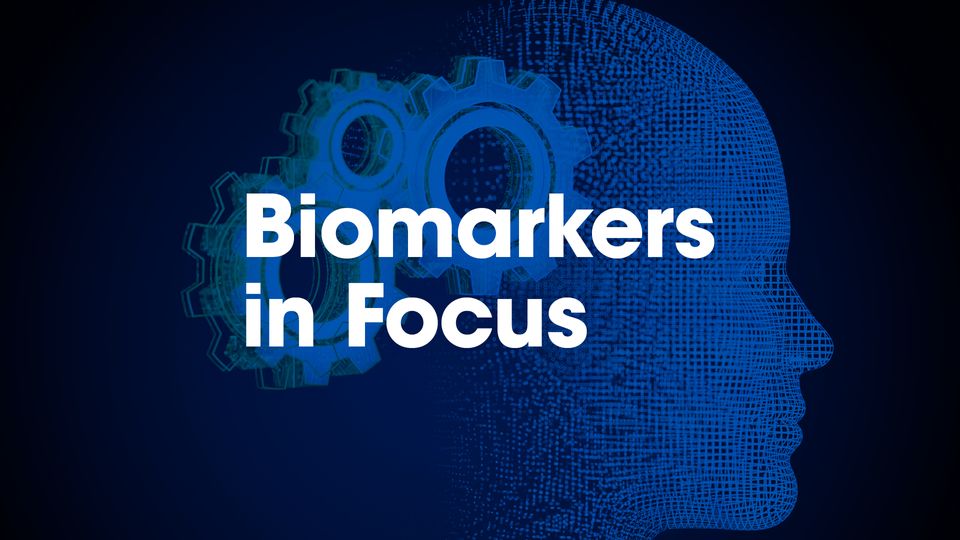The Landscape of Potential Biomarkers for ADHD

Attention deficit/hyperactivity disorder (ADHD) is a developmental condition that is characterized by an ongoing pattern of inattention, hyperactivity or both. It is one of the most common disorders in children and affects approximately five percent of children worldwide. In 40-50% of cases, the disorder persists in adults.
The clinical presentation and symptom profile of ADHD vary greatly from individual to individual, and co-morbidities including autism spectrum disorder, intellectual disability and learning disorders such as dyslexia are common.
The current diagnostic process is based on behavioral tests and interviews prescribed by the Diagnostic and Statistical Manual of Mental Disorders, 5th Edition. This form of diagnosis can prove challenging, particularly in cases with predominantly inattentive presentation, when co-morbidities are present or for the female sex.
“Currently, ADHD diagnosis relies exclusively on clinical presentation and patient history, underscoring the need for clinically relevant, reliable and objective biomarkers,” Sheng-Yu Lee, Liang-Jen Wang and Cheng-Fang Yen state in their recent work.
Biomarkers could form a more objective and accurate means of diagnosing ADHD. This listicle reviews potential biomarkers for ADHD, including neuroendocrine markers, genetic markers and metabolite markers.
Potential neuroendocrine biomarkers
Yen and colleagues propose that the neuroendocrine system, which is closely linked to age and sex, may influence the development of neural circuitry and therefore ADHD. The sex-based differences in the neuroendocrine system may account for the higher prevalence of ADHD in males.
Their research focused on the most common steroid in the human body, dehydroepiandrosterone sulfate (DHEA-S), which is produced by the adrenal cortex and the brain. In their study, people with ADHD had lower levels of DHEA-S compared to controls, and DHEA-S levels were negatively correlated with impulsivity.
In boys with ADHD, the researchers found that polymorphisms in the STS gene, which influences androgen synthesis and metabolism and has previously been associated with increased ADHD risk, were linked to DHEA-S levels. indicating that STS gene polymorphisms could contribute to the pathology of ADHD and form an ADHD biomarker.
Potential genetic biomarkers
The first wave of genetic studies into ADHD focused on genes involved in dopaminergic neurotransmission, in keeping with the hypothesis that ADHD may be, in part, caused by altered dopamine signaling.
The variable number of tandem repeats in the 3’-untranslated region of the dopamine transporter gene, DAT1, has been identified as a potential biomarker for ADHD, with the 10-repeat variant having been associated with childhood ADHD, and the 9-repeat variant more strongly linked to adulthood ADHD.
A seven-repeat allele of the dopamine D4 receptor gene, DRD4, is also associated with ADHD in children, with neuropsychological and neuroimaging studies linking this variant with worsened attention and impulsivity.
Altered Wnt signaling, which orchestrates cell proliferation and differentiation, has also been linked to neurodevelopmental disorders including ADHD. LRP5 and LRP6 code for essential Wnt signaling activation receptors, and research has indicated that a variant of LRP5 is associated with childhood ADHD in girls, and a variant of the LRP6 gene is associated with ADHD in boys.
More recently, a genome-wide association study outlined that many genetic variants combine to increase the risk of ADHD, finding variants across 12 different loci that significantly differ between individuals with ADHD and neurotypical controls.
Potential metabolite biomarkers
Metabolites are small molecules formed during biochemical reactions, which encompass amino acids, lipids, hormones and exogenous substances that are metabolized by humans.
Altered levels of specific metabolites in blood have previously been linked to neuropsychiatric conditions including dementia and bipolar depression.
Shi and colleagues used Mendelian Randomization – a technique used to infer which genes cause disease – and genome-wide association study data to analyze the genetic link between plasma metabolites and ADHD.
Their research identified 42 metabolites with a causal effect on ADHD, 22 of which were positively associated with ADHD risk. The metabolic pathways implicated in ADHD risk included long-chain polyunsaturated acid biosynthesis, and methionine, tyrosine, cysteine and taurine metabolism.
A particular metabolite of interest was 3-methoxytyramine sulfate (MTS), a product of tyrosine metabolism and a precursor to the neurotransmitter dopamine. Shi and colleagues noted that higher levels of MTS were associated with a reduced risk of ADHD and that MTS could act as a biomarker of neurotransmitter activity.
Another study by Hung and colleagues pinpointed 156 metabolites that differed between children with ADHD and controls. Of these, children with ADHD had notably increased cholic acid and homoveratric acid levels and decreased levels of inosine and nicotinuric acid.
The discovery of metabolites that differ between people with ADHD and controls could provide insights into ADHD pathophysiology and may lead to a metabolite panel that can be used for diagnosis.
Potential neurological biomarkers
Magnetic resonance imaging (MRI) research has illustrated that the brains of people with ADHD are structurally different to neurotypical controls. In the brains of people with ADHD, the volume of gray matter is reduced and the maturation of cortical and subcortical regions is delayed.
Electroencephalography has also been used to reveal differences between specific brainwave patterns that are associated with ADHD severity, indicating that neuroimaging techniques have potential for detecting ADHD biomarkers.
Functional MRI (fMRI) provides better spatial resolution than MRI, offering greater insights into the brain regions and networks that are linked to ADHD. Zamanzadeh and colleagues used fMRI to identify potential diagnostic biomarkers for ADHD, focused on audiovisual integration (AVI) networks due to the association between ADHD and sensory processing deficits.
They examined the brain regions with an established role in AVI and assessed the organization and efficiency of the AVI-related brain networks, finding significant differences in connectivity patterns between controls and people with ADHD.
Functional near-infrared spectroscopy (fNRI), a non-invasive brain functional imaging technique, has identified neurobiological features of ADHD that have potential for use as a diagnostic biomarker.
Zhou and colleagues used the results from fNRI scans to identify that children with ADHD exhibit abnormal activation in the right inferior frontal gyrus and the left precentral gyrus during a Go/No Go task. They also found altered functional connectivity patterns in children with ADHD during the task. Data from the fNRI scans was also used to create machine learning classifiers, which could successfully distinguish between children with ADHD and the controls.
Challenges in applying biomarkers in clinical practice
The World Federation for ADHD and the World Federation of Societies of Biological Psychiatry have identified criteria that candidate biomarkers must meet before they can be used in the clinic.
For a biomarker to be clinically relevant, it should have specificity and sensitivity of at least 80% and be easy to use in the clinic – that is, non-invasive, reliable, simple to use and cost effective. It should also be confirmed by two independent studies that are published in peer-reviewed journals.
In accordance with these guidelines, there has yet to be a clinically valid biomarker identified for ADHD, in part due to the vast differences in how ADHD may present in an individual.
In a recent review, Cortese and colleagues outline how “methodological limitations, including small sample size, lack of standardization, confounding factors and poor replicability” have slowed progress in the field of ADHD biomarkers.
They propose that larger and more robust studies supported by increased international collaboration could improve diagnostic accuracy of biomarkers and pave the way to their use in the clinic.
With the varied disciplines of research into potential ADHD biomarkers, there could be the potential to combine datasets to improve understanding of the mechanisms behind ADHD and identify clinically relevant biomarkers in future.





